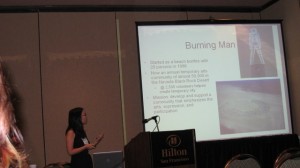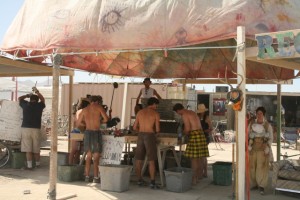One reader emailed me the following question: “What foundation texts would you recommend for a burner with very little knowledge of sociology and anthropology?” I’ve polled my colleagues, and here are several suggestions for where to start your journey to understanding society. In a future post, I’ll make additional suggestions for readings on organizations.
Sociology
In sociology, the three foundational theorists are Emile Durkheim, Karl Marx, and Max Weber. Much of subsequent research has built on these three theorists’ perspectives.
If you’re reading on your own, my colleagues suggested starting with the following works:
C. Wright Mills. 2000. The Sociological Imagination. Oxford University Press. Mills helps readers make links between seemingly “individual” experiences to larger societal issues.
Erving Goffman. 1959. The Presentation of Self in Everyday Life. New York: Anchor Books. Ever wonder why everyone pretends to not notice when someone farts or commits a similar faux pas? Goffman shows us how we work together to smooth over such interactions. If you like this book, you’ll probably also enjoy Goffman’s other works, including Stigma and Asylums.
W.E. Dubois. 1978. On Sociology and the Black Community. Chicago, IL: University of Chicago Press. One of the founders of studies on inequality and race and ethnicity, with the aims of rectifying inequality.
Religion
Emile Durkheim. 1915. The Elementary Forms of the Religious Life. New York: Free Press. See why the “Man” may be a totem for a community!
Knowledge
Peter L. Berger and Thomas Luckmann. 1966. The Social Construction of Reality: A Treatise in the Sociology of Knowledge. New York: Anchor Books. Learn how concepts, ideas, categories, common sense, etc. become taken-for-granted and unquestioned.
Post-modern theorists
Michel Foucault. 1995. Discipline and Punish: The Birth of a Prison. Translated by Alan Sheridan. New York: Vintage Books.
Jean Baudrillard. Books such as The System of Objects critique the place of consumption.
Communities and nations
Benedict Anderson. 2006. Imagined Communities. London: Verso. How do people conceive of themselves as a connected community, especially as a nation?
Anthropology (citations provided via a colleague and fellow Burner and religious studies scholar Lee Gilmore – since I’m not in an expert in these areas, I’ll present most without comment)
Mary Douglas’s books include Purity and Danger: An Analysis of Concepts of Pollution and Taboo. Some organizations scholars like her 1986 How Institutions Think.
Anything by Edward E. Evans-Pritchard.
Anything by Clifford Geertz. In particular, his 1977 “Deep Play: Notes on the Balinese Cockfight” in The Interpretation of Cultures (New York: Basic Books) is a good place to start.
Anything by Claude Levi-Strauss.
Anything by Bronsilaw Malinowski. For example, his 1989 A Diary in the Strictest Sense of the Term. Stanford, CA: Stanford University Press. This anthropologist’s diary reveals the ambivalent feelings and physical distress that a researcher might experience while in the field.
Marcel Mauss. 2000. The Gift. W.W. Norton. Understand how gift-giving reinforces ties among persons.
Anything by Alfred Radcliffe-Brown.
Anything by Victor Turner, including The Ritual Process.
Good luck on your journey!


